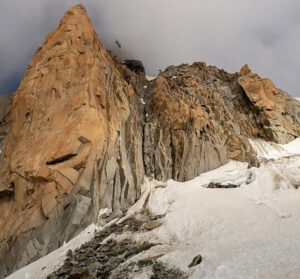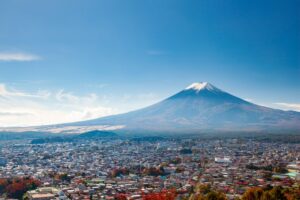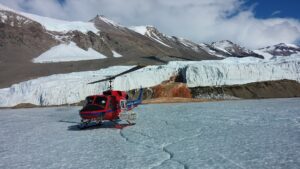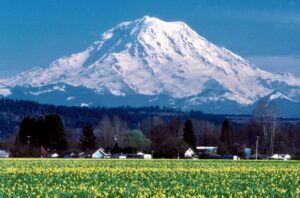The Goûter Route on Mont Blanc (4,808m) above Chamonix, France sees thousands of ascents per year. Often called one of the two “normal routes” on Europe’s highest peak, its relatively low technical difficulty makes it popular among mountaineers of all skill levels.
But a new geological development near the peak may make the Goûter a lot more prohibitive. Recently, a massive crevasse opened up high on the route’s summit ridgeline. Traversing the area previously required a trek through an unassuming snowfield. Now, it’s a potentially dangerous alpine puzzle of steep, 10m walls and snow bridges.
A team of scientists and aspiring mountain guides climbed to the Bosses ridge to survey the change. They found a huge trench 16m wide, 16m deep, and 130m long. (Swipe left below for visuals).
Giant crack complicates climbing on Mont Blanc
Xavier Cailhol, Ludovic Ravanel, and Jacques Mourey wrote an article that seeks to determine how the crevasse system got there and to explore its implications for mountaineers.
With aerial photos, mapping, and direct observation, scientists found that the terrain barely changed from 2000 to 2019. Then, it started widening rapidly. As of now, delicate, shifting bridges facilitate the best passage.
Result? “This sector makes the ascent of Mont Blanc more technically difficult and requires great caution,” the article’s authors assess.

The new crevasses opened above the exposed rock just before the route appears to take a left turn near the summit. Photo: Christian via Wiki Commons
The area covers terrain just under the Tournette Spur, between 4,594m and 4,650m. The crack opened significantly this past winter, and guides are skeptical whether heavy snowfall will fill it for the summer climbing season. Even if it does fill back in, it may still be more dangerous than before.
Its current condition “means that the route is more technical than usual at this point. On this normal route, we tend to trivialize the fact of being in glacial zones,” Cailhol told Alpine Mag, noting that he didn’t always rope up for the section on previous trips. “What the presence of these snow bridges implies is a problem of mountaineering progression in the strict sense.”
What’s this thing doing here?
The team studied several hypotheses in search of the phenomenon’s origin. The most likely would be that the Bossons Glacier is a “slope glacier” whose downstream part is at 0°C. At its base, liquid water allows it to glide over rock. The upstream region is colder — ice well below zero, which can stick to the rock. They hypothesize that with climate change, the glacier could be warming up, allowing some parts to slide faster. As a result, new fissures open.
The team says it will carry out ongoing measurements on Mont Blanc to follow the crevasse system’s evolution and better understand how it formed.
Cailhol acknowledged that it’s unclear how conditions on the glacier will affect climbing this summer. He admits that it’s a sketchy proposition now, “when you see the size of this crevasse, how open it is and the shape it has.”
He added: “In the best case, the impact will be minor this summer, but going solo in the current state of things, you really have to be daring.”
Train schedule adjusts
Considering the added danger from the glacier and surrounding rock’s increased activity, the Mont Blanc Express train schedule will change. From July 9-August 28, the train will leave at 7 am from St. Gervais/Le Fayet in Chamonix, instead of the usual 8 am. The earlier time benefits mountaineers by helping them to cross the Goûter Couloir — colorfully known as the Corridor of Death — when the probability of rockfall is lower.






